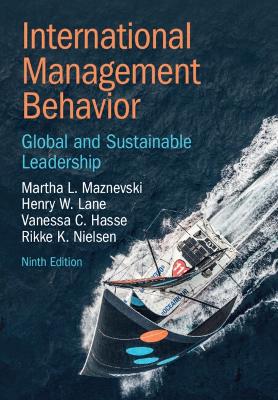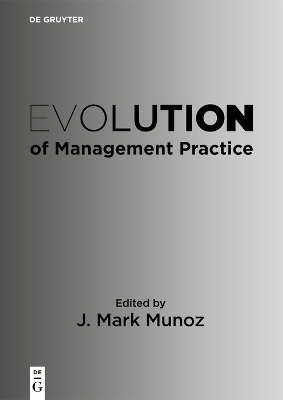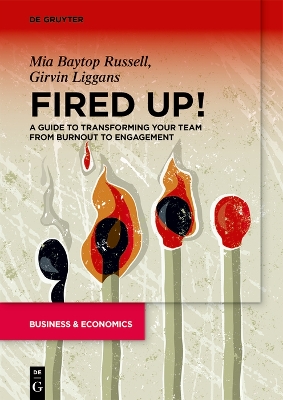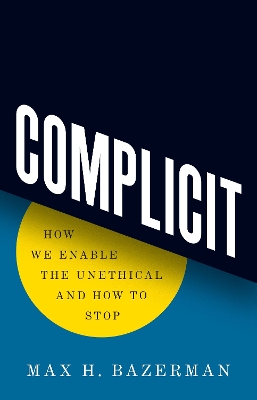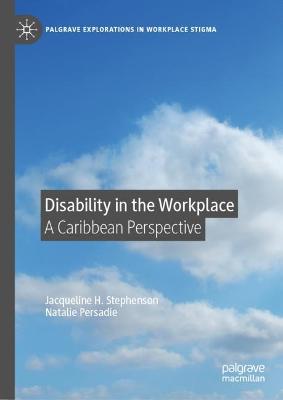De Gruyter Handbook of Disability and Management
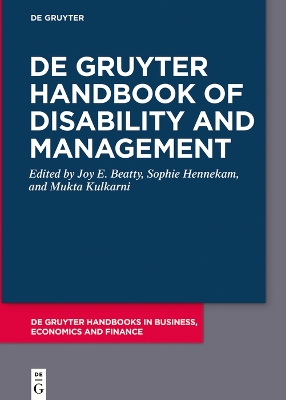 portes grátis
portes grátis
De Gruyter Handbook of Disability and Management
Hennekam, Sophie; Beatty, Joy; Kulkarni, Mukta
De Gruyter
11/2024
441
Mole
9783111620862
15 a 20 dias
Descrição não disponível.
1) Framing and introduction - the first section establishes the historical and conceptual framework underpinning disability workplace research. It could also be divided into two sections, separating the introduction from the conceptual section if we receive several entries. The aims are to establish: Why is this topic relevant and interesting for management scholars, and why now? What is the scope of the disability/management space? What topics and concepts have historically guided work in this area (e.g., stigma, accommodations) and what concepts are trending (e.g., ableism, inclusion, intersectionality)?
Possible chapters:
Overview of the history and evolution of disability paradigms
Disability and labor market outcomes
Why context matters
Stigma dimensions and disability characteristics
Ableism and diversity
Disclosure
Identity development
Intersectionality
Temporality and liminality
2) Contexts - the second section further develops the arguments related to context, spanning the micro (individuals), meso (work groups and organizations) and macro (legal and institutional) levels. This section gets to the core purpose of our volume, taking an interdisciplinary perspective to integrate legal, cultural, workplace, and individual contexts. It aims to address: What contextual factors influence the workplace opportunities and experiences for employees with a disability? What are potential barriers to workplace opportunities? How do legal policies and cultural values shape organizational responses to disability inclusion? In what way do persons with a disability differ from one another and how does this affect how they navigate the labor market?
Possible chapters:
Outlining employment models - competitive employment, sheltered employment, self-employment
Role of technology - changing the workplace expectations and possibilities for all
Educational context - managing transitions between K-12 and higher educational as well as the transition between one's training and the workplace, workplace training and lifelong learning
The importance of allies, social support, role models and mentoring
The role of organizational culture and support. Are some sectors more supportive than others?
Cross-cultural comparisons. Discussion of broad differences between countries as well as case studies and comparisons between specific counties with different approaches to disability
Laws/quotas
Which categories get more/less attention
How cultural beliefs shape the context for persons with a disability
Differences in accommodation strategies
3) Considering specific disability categories - section three will offer focused coverage of the issues and opportunities for specific disability categories. Experiences of disability vary depending on the types of limitations an individual has - whether their condition is visible, whether workplace accommodation is needed, and the extent to which the disability is stigmatized. This section addresses: What are key concerns for diverse disability categories? How do concerns differ across the broader disability/workplace space? How do these aspects affect employability or career prospects?
Possible chapters:
Mobility disabilities
Sensory disabilities
Psychological disabilities
Multiple disabilities
Comparing experiences of disability categories
4) HRM Practices - section four addresses how HR practices and policies, as well as other forms of organizational support shape work opportunities for persons with a disability, as both barriers and enablers. It aims to answer: What policies and practices present barriers for persons with a disability? What types of policies have been effective in improving employment opportunities for this collective? What role do organizations, managers and co-workers play in the employment experiences of this collective?
Possible chapters include:
Organizational approaches and philosophies to disability - disability blind or disability focused?
Accessible recruitment practices
Accommodations
Examples of innovative disability inclusion programs
Training and development, self-development
5) Looking Forward/ Future Research - section five offers ideas on how researchers, practitioners, and policy makers can think about forms of inclusion in the future. This section addresses: Where are we going from here? What are the current best practices to make organizations more inclusive? Which research areas need further development? What areas warrant special concern?
Possible chapters:
What trends will influence the future of disability research
Changing technology
Changing work design
Next steps for the human rights perspective - expanding views of disability
Best practices around the world, a recap
Overall, the Handbook will elicit research that integrates levels, contexts, and perspectives. We will solicit chapters that are focused on both access to and treatment within diverse workplaces, maintaining a focus on organizational life informed by interdisciplinary perspectives.
Possible chapters:
Overview of the history and evolution of disability paradigms
Disability and labor market outcomes
Why context matters
Stigma dimensions and disability characteristics
Ableism and diversity
Disclosure
Identity development
Intersectionality
Temporality and liminality
2) Contexts - the second section further develops the arguments related to context, spanning the micro (individuals), meso (work groups and organizations) and macro (legal and institutional) levels. This section gets to the core purpose of our volume, taking an interdisciplinary perspective to integrate legal, cultural, workplace, and individual contexts. It aims to address: What contextual factors influence the workplace opportunities and experiences for employees with a disability? What are potential barriers to workplace opportunities? How do legal policies and cultural values shape organizational responses to disability inclusion? In what way do persons with a disability differ from one another and how does this affect how they navigate the labor market?
Possible chapters:
Outlining employment models - competitive employment, sheltered employment, self-employment
Role of technology - changing the workplace expectations and possibilities for all
Educational context - managing transitions between K-12 and higher educational as well as the transition between one's training and the workplace, workplace training and lifelong learning
The importance of allies, social support, role models and mentoring
The role of organizational culture and support. Are some sectors more supportive than others?
Cross-cultural comparisons. Discussion of broad differences between countries as well as case studies and comparisons between specific counties with different approaches to disability
Laws/quotas
Which categories get more/less attention
How cultural beliefs shape the context for persons with a disability
Differences in accommodation strategies
3) Considering specific disability categories - section three will offer focused coverage of the issues and opportunities for specific disability categories. Experiences of disability vary depending on the types of limitations an individual has - whether their condition is visible, whether workplace accommodation is needed, and the extent to which the disability is stigmatized. This section addresses: What are key concerns for diverse disability categories? How do concerns differ across the broader disability/workplace space? How do these aspects affect employability or career prospects?
Possible chapters:
Mobility disabilities
Sensory disabilities
Psychological disabilities
Multiple disabilities
Comparing experiences of disability categories
4) HRM Practices - section four addresses how HR practices and policies, as well as other forms of organizational support shape work opportunities for persons with a disability, as both barriers and enablers. It aims to answer: What policies and practices present barriers for persons with a disability? What types of policies have been effective in improving employment opportunities for this collective? What role do organizations, managers and co-workers play in the employment experiences of this collective?
Possible chapters include:
Organizational approaches and philosophies to disability - disability blind or disability focused?
Accessible recruitment practices
Accommodations
Examples of innovative disability inclusion programs
Training and development, self-development
5) Looking Forward/ Future Research - section five offers ideas on how researchers, practitioners, and policy makers can think about forms of inclusion in the future. This section addresses: Where are we going from here? What are the current best practices to make organizations more inclusive? Which research areas need further development? What areas warrant special concern?
Possible chapters:
What trends will influence the future of disability research
Changing technology
Changing work design
Next steps for the human rights perspective - expanding views of disability
Best practices around the world, a recap
Overall, the Handbook will elicit research that integrates levels, contexts, and perspectives. We will solicit chapters that are focused on both access to and treatment within diverse workplaces, maintaining a focus on organizational life informed by interdisciplinary perspectives.
Este título pertence ao(s) assunto(s) indicados(s). Para ver outros títulos clique no assunto desejado.
Behinderungsmanagement; Beschaeftigung mit Behinderung; Invaliditaet; Disability; human resource management; inclusion; social responsibility; intersectionality
1) Framing and introduction - the first section establishes the historical and conceptual framework underpinning disability workplace research. It could also be divided into two sections, separating the introduction from the conceptual section if we receive several entries. The aims are to establish: Why is this topic relevant and interesting for management scholars, and why now? What is the scope of the disability/management space? What topics and concepts have historically guided work in this area (e.g., stigma, accommodations) and what concepts are trending (e.g., ableism, inclusion, intersectionality)?
Possible chapters:
Overview of the history and evolution of disability paradigms
Disability and labor market outcomes
Why context matters
Stigma dimensions and disability characteristics
Ableism and diversity
Disclosure
Identity development
Intersectionality
Temporality and liminality
2) Contexts - the second section further develops the arguments related to context, spanning the micro (individuals), meso (work groups and organizations) and macro (legal and institutional) levels. This section gets to the core purpose of our volume, taking an interdisciplinary perspective to integrate legal, cultural, workplace, and individual contexts. It aims to address: What contextual factors influence the workplace opportunities and experiences for employees with a disability? What are potential barriers to workplace opportunities? How do legal policies and cultural values shape organizational responses to disability inclusion? In what way do persons with a disability differ from one another and how does this affect how they navigate the labor market?
Possible chapters:
Outlining employment models - competitive employment, sheltered employment, self-employment
Role of technology - changing the workplace expectations and possibilities for all
Educational context - managing transitions between K-12 and higher educational as well as the transition between one's training and the workplace, workplace training and lifelong learning
The importance of allies, social support, role models and mentoring
The role of organizational culture and support. Are some sectors more supportive than others?
Cross-cultural comparisons. Discussion of broad differences between countries as well as case studies and comparisons between specific counties with different approaches to disability
Laws/quotas
Which categories get more/less attention
How cultural beliefs shape the context for persons with a disability
Differences in accommodation strategies
3) Considering specific disability categories - section three will offer focused coverage of the issues and opportunities for specific disability categories. Experiences of disability vary depending on the types of limitations an individual has - whether their condition is visible, whether workplace accommodation is needed, and the extent to which the disability is stigmatized. This section addresses: What are key concerns for diverse disability categories? How do concerns differ across the broader disability/workplace space? How do these aspects affect employability or career prospects?
Possible chapters:
Mobility disabilities
Sensory disabilities
Psychological disabilities
Multiple disabilities
Comparing experiences of disability categories
4) HRM Practices - section four addresses how HR practices and policies, as well as other forms of organizational support shape work opportunities for persons with a disability, as both barriers and enablers. It aims to answer: What policies and practices present barriers for persons with a disability? What types of policies have been effective in improving employment opportunities for this collective? What role do organizations, managers and co-workers play in the employment experiences of this collective?
Possible chapters include:
Organizational approaches and philosophies to disability - disability blind or disability focused?
Accessible recruitment practices
Accommodations
Examples of innovative disability inclusion programs
Training and development, self-development
5) Looking Forward/ Future Research - section five offers ideas on how researchers, practitioners, and policy makers can think about forms of inclusion in the future. This section addresses: Where are we going from here? What are the current best practices to make organizations more inclusive? Which research areas need further development? What areas warrant special concern?
Possible chapters:
What trends will influence the future of disability research
Changing technology
Changing work design
Next steps for the human rights perspective - expanding views of disability
Best practices around the world, a recap
Overall, the Handbook will elicit research that integrates levels, contexts, and perspectives. We will solicit chapters that are focused on both access to and treatment within diverse workplaces, maintaining a focus on organizational life informed by interdisciplinary perspectives.
Possible chapters:
Overview of the history and evolution of disability paradigms
Disability and labor market outcomes
Why context matters
Stigma dimensions and disability characteristics
Ableism and diversity
Disclosure
Identity development
Intersectionality
Temporality and liminality
2) Contexts - the second section further develops the arguments related to context, spanning the micro (individuals), meso (work groups and organizations) and macro (legal and institutional) levels. This section gets to the core purpose of our volume, taking an interdisciplinary perspective to integrate legal, cultural, workplace, and individual contexts. It aims to address: What contextual factors influence the workplace opportunities and experiences for employees with a disability? What are potential barriers to workplace opportunities? How do legal policies and cultural values shape organizational responses to disability inclusion? In what way do persons with a disability differ from one another and how does this affect how they navigate the labor market?
Possible chapters:
Outlining employment models - competitive employment, sheltered employment, self-employment
Role of technology - changing the workplace expectations and possibilities for all
Educational context - managing transitions between K-12 and higher educational as well as the transition between one's training and the workplace, workplace training and lifelong learning
The importance of allies, social support, role models and mentoring
The role of organizational culture and support. Are some sectors more supportive than others?
Cross-cultural comparisons. Discussion of broad differences between countries as well as case studies and comparisons between specific counties with different approaches to disability
Laws/quotas
Which categories get more/less attention
How cultural beliefs shape the context for persons with a disability
Differences in accommodation strategies
3) Considering specific disability categories - section three will offer focused coverage of the issues and opportunities for specific disability categories. Experiences of disability vary depending on the types of limitations an individual has - whether their condition is visible, whether workplace accommodation is needed, and the extent to which the disability is stigmatized. This section addresses: What are key concerns for diverse disability categories? How do concerns differ across the broader disability/workplace space? How do these aspects affect employability or career prospects?
Possible chapters:
Mobility disabilities
Sensory disabilities
Psychological disabilities
Multiple disabilities
Comparing experiences of disability categories
4) HRM Practices - section four addresses how HR practices and policies, as well as other forms of organizational support shape work opportunities for persons with a disability, as both barriers and enablers. It aims to answer: What policies and practices present barriers for persons with a disability? What types of policies have been effective in improving employment opportunities for this collective? What role do organizations, managers and co-workers play in the employment experiences of this collective?
Possible chapters include:
Organizational approaches and philosophies to disability - disability blind or disability focused?
Accessible recruitment practices
Accommodations
Examples of innovative disability inclusion programs
Training and development, self-development
5) Looking Forward/ Future Research - section five offers ideas on how researchers, practitioners, and policy makers can think about forms of inclusion in the future. This section addresses: Where are we going from here? What are the current best practices to make organizations more inclusive? Which research areas need further development? What areas warrant special concern?
Possible chapters:
What trends will influence the future of disability research
Changing technology
Changing work design
Next steps for the human rights perspective - expanding views of disability
Best practices around the world, a recap
Overall, the Handbook will elicit research that integrates levels, contexts, and perspectives. We will solicit chapters that are focused on both access to and treatment within diverse workplaces, maintaining a focus on organizational life informed by interdisciplinary perspectives.
Este título pertence ao(s) assunto(s) indicados(s). Para ver outros títulos clique no assunto desejado.

